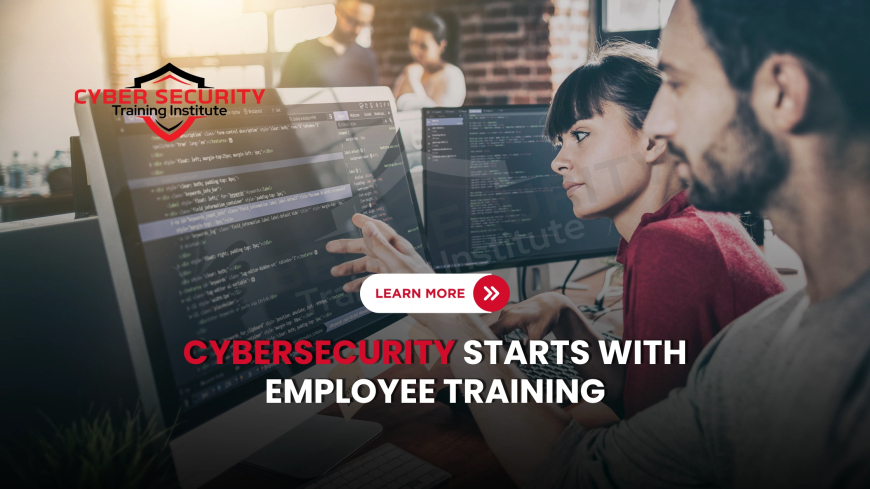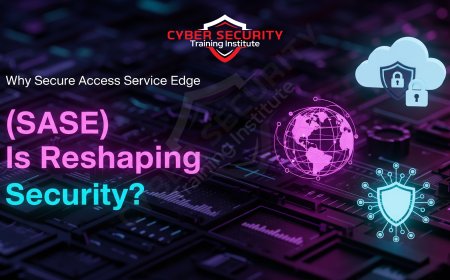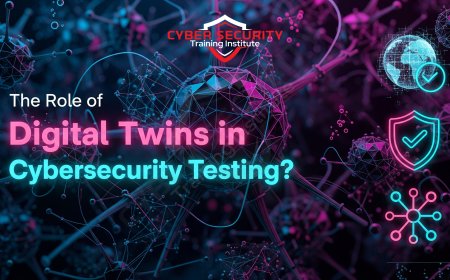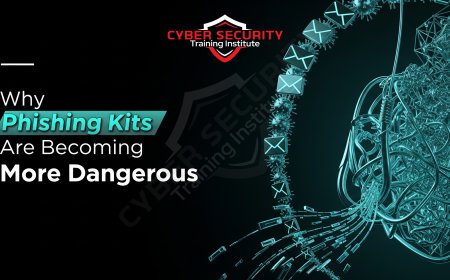The Human Factor | Why Employee Training Is Your Best Cybersecurity Defense
Picture this: a single click on a suspicious email link by an unsuspecting employee, and suddenly your company’s sensitive data is locked, stolen, or leaked to the dark web. In 2025, with cybercrime costing businesses a staggering $10.5 trillion annually, human error remains the weak link in cybersecurity, contributing to 80% of data breaches.2617 While firewalls and antivirus software are crucial, they can’t stop an employee from falling for a phishing scam or sharing a password. That’s where employee training comes in—the unsung hero of cybersecurity. In this blog post, we’ll explore why training your staff is the best defense against cyber threats, how to do it effectively, and why it’s a game-changer for businesses of all sizes. Written in a clear, beginner-friendly way, this guide is for anyone looking to strengthen their company’s security through its people. Let’s dive in and empower your team to be your first line of defense!

Table of Contents
- What Is the Human Factor in Cybersecurity?
- Why Human Error Is a Top Cybersecurity Risk
- Common Cyber Threats Exploiting Employees
- The Power of Employee Training
- Key Elements of Effective Cybersecurity Training
- Real-World Success Stories
- Challenges in Implementing Training
- Measuring the ROI of Cybersecurity Training
- Conclusion
- FAQs
What Is the Human Factor in Cybersecurity?
The human factor refers to the role employees play in a company’s cybersecurity—either as a strength or a vulnerability. People interact with technology daily, from opening emails to accessing sensitive data, and their actions can make or break security. Unlike software, humans can be tricked, distracted, or unaware, making them prime targets for hackers.
In 2025, 80% of data breaches involve human error, such as clicking phishing links or using weak passwords.
Why Human Error Is a Top Cybersecurity Risk
Humans are often the easiest way into a company’s systems. Here’s why:
- Social Engineering: Hackers exploit trust, tricking employees into sharing sensitive info.
33 - Lack of Awareness: Many employees don’t recognize cyber threats like phishing.
17 - Weak Passwords: Simple passwords or reused ones are easy to crack.
15 - Insider Threats: Employees may accidentally or intentionally leak data.
7 - Remote Work Risks: Unsecured home networks increase vulnerabilities.
28
With breaches costing an average of $4.45 million, human mistakes are expensive.
Common Cyber Threats Exploiting Employees
Hackers target employees through various tactics:
- Phishing: Fake emails or texts tricking users into sharing credentials or clicking malicious links.
33 - Social Engineering: Pretending to be a trusted figure, like a CEO, to gain access.
32 - Ransomware: Malware locking data, often triggered by employee clicks.
26 - Credential Theft: Stealing passwords through weak security practices.
15 - BYOD Risks: Personal devices used for work lacking proper security.
28
These threats exploit human trust, making training essential to build a human firewall.
The Power of Employee Training
Training empowers employees to recognize and respond to threats, reducing risks:
- Reduces Breaches: Trained staff cut phishing success rates by 70%.
17 - Boosts Awareness: Employees learn to spot suspicious activity.
17 - Improves Culture: Fosters a security-first mindset across teams.
28 - Saves Money: Prevents costly breaches and downtime.
2
In 2025, companies with regular training see 50% fewer incidents than those without.
Key Elements of Effective Cybersecurity Training
Effective training is engaging, practical, and ongoing. Key elements include:
- Interactive Sessions: Use simulations, like fake phishing emails, to practice.
17 - Regular Updates: Train quarterly to cover new threats.
28 - Simple Language: Avoid jargon to ensure all staff understand.
17 - Gamification: Use quizzes or rewards to boost engagement.
17 - Role-Specific Content: Tailor training to finance, IT, or HR needs.
28
Here’s a table comparing training approaches:
| Training Element | Benefit | Example |
|---|---|---|
| Interactive Sessions | Hands-on learning | Phishing simulations |
| Regular Updates | Keeps skills current | Quarterly workshops |
| Simple Language | Accessible to all | Non-technical terms |
| Gamification | Boosts engagement | Quizzes with rewards |
These elements make training stick, turning employees into security assets.
Real-World Success Stories
Training works wonders. In 2024, a tech firm reduced phishing incidents by 60% after monthly simulations.
In 2025, a retail chain used gamified training, boosting employee engagement and cutting insider threats by 25%.
Challenges in Implementing Training
Training isn’t without hurdles:
- Time Constraints: Employees and managers prioritize daily tasks over training.
28 - Cost: Developing programs can be expensive for small firms.
18 - Engagement: Boring sessions lead to low retention.
17 - Keeping Up: New threats require constant updates.
8
Overcoming these requires short, engaging sessions and affordable online tools, ensuring training fits busy schedules.
Measuring the ROI of Cybersecurity Training
Training delivers measurable benefits:
- Reduced Breaches: Cuts incident costs by up to 50%.
28 - Lower Downtime: Prevents disruptions, saving operational costs.
24 - Improved Compliance: Avoids GDPR fines, which hit €1.7 billion in 2024.
14 - Better Morale: Empowered employees feel valued.
28
Companies spending $10,000 on training save $1 million in breach costs on average.
Conclusion
In 2025, with human error driving 80% of cyber breaches, employee training is the cornerstone of cybersecurity. We’ve explored the human factor, why it’s a risk, common threats, the power of training, effective strategies, success stories, challenges, and ROI. From phishing to ransomware, employees are the first line of defense, and training empowers them to protect your business. By using interactive, regular, and engaging programs, companies can turn staff into security assets, saving millions and boosting morale. Don’t wait for a breach—start training your team today to build a stronger, safer organization.
FAQs
What is the human factor in cybersecurity?
The role employees play in security, as either a strength or vulnerability.
Why is human error a cybersecurity risk?
It causes 80% of breaches through mistakes like clicking phishing links.
What is phishing?
Fake emails or texts tricking users into sharing info or clicking links.
What is social engineering?
Hackers posing as trusted figures to gain access or information.
How does training help?
It teaches employees to spot and avoid cyber threats, reducing breaches.
What is ransomware?
Malware locking data until a ransom is paid.
Can training prevent insider threats?
Yes, by raising awareness and promoting secure habits.
What is a BYOD risk?
Unsecured personal devices used for work, vulnerable to attacks.
How often should training happen?
Quarterly, to keep up with new threats.
What is gamification in training?
Using quizzes or rewards to make learning engaging.
Can small businesses afford training?
Yes, affordable online tools make it accessible.
How much do breaches cost?
Average $4.45 million per incident in 2025.
What is a phishing simulation?
A fake email test to train employees on spotting phishing.
Does training improve compliance?
Yes, it helps meet laws like GDPR, avoiding fines.
What is credential theft?
Stealing passwords through weak security practices.
Can training boost morale?
Yes, empowered employees feel valued and confident.
Why is engagement important?
Engaging training ensures employees retain and apply lessons.
How much can training save?
Up to $1 million in breach costs for a $10,000 investment.
Are remote workers at risk?
Yes, unsecured home networks increase vulnerabilities.
What’s the ROI of training?
Reduces breaches, downtime, and fines, saving millions.
What's Your Reaction?
 Like
0
Like
0
 Dislike
0
Dislike
0
 Love
0
Love
0
 Funny
0
Funny
0
 Angry
0
Angry
0
 Sad
0
Sad
0
 Wow
0
Wow
0
















